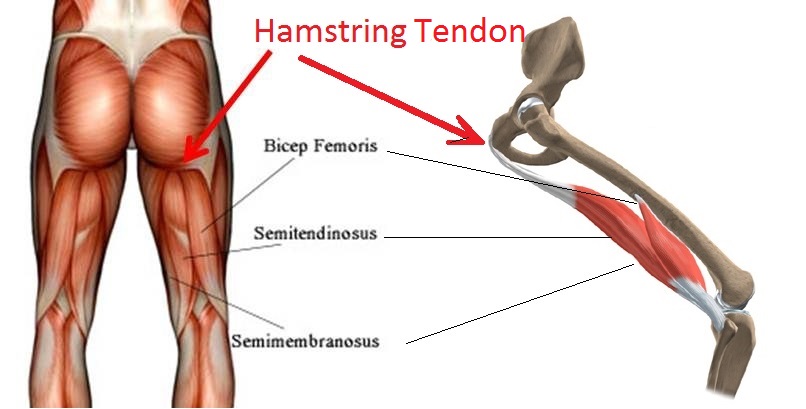Book in using this link: https://physio4richmond.connect.tm3app.com/
Hamstring tendinopathy in runners
Hamstring tendinopathy in runners

Hamstring tendon anatomy
Proximal hamstring tendinopathy is characterised by pain in the area where your hamstring muscle group meets your buttock region and attaches to the pelvis. Sometimes pain can be felt on the tendon itself where it attaches to the ischial tuberosity (pelvis). This attachment area is the hard boney surface that you feel when you sit on a firm chair. More often than not however most of the pain presents as a dull ache referring down the hamstring muscle to the back of the knee. Sometimes even the sciatic nerve can be irritated with this type of condition resulting in low back pain and calf tightness alongside the hamstring pain described above.
So what causes this injury? It is usually caused by a compressive load sustained on the hamstring tendon with the hip in a flexed position i.e. long periods sitting on hard seat, cycling, deep lunges, certain yoga poses, bending over with your legs straight washing your hair. From a runners point of view it is commonly caused by running up hill and also at high speeds. As you can see from the pictures above, the tendon is poorly designed as it doesnt join to the near side of the bone but instead wraps around the bone and attaches to the opposite side. This anatomical attachment makes it easier for you to compress and aggravatethe tendon when your hip is flexed.

He isn't happy
Dont poke the bear! In order to rehabilitate from any tendinopathy type of injury, you need to reduce your irritants. Does that mean you need to stop exercising altogether? No it doesnt. It means you need to keep your pain below 4/10 on a 0-10 pain scale range (where 0 = no pain and 10 = being hit by a bus!). Now the problem with tendon pain is that it is commonly referred to as 24 hour pain. This is because it usually is worse the next day after you run but not during the run. So if you can jog 5km at a quick pace and have 2/10 pain on the run and 6/10 pain the next morning, then you need to reduce your irritants and not poke the bear i.e. you need to reduce your speed or plan a less hillier route.
So what can you do? Simple things like sitting on softer chairs or sitting with a golf ball under your tendon can disperse the load through the tendon better. Also try and avoid bending over for long periods with your hips flexed and your legs straight (such as deadlifts in the gym or when your gardening). Another classic pitfall is stretching your hamstrings with ...again you guessed it.. your hips flexed and leg straight (which is nearly every type of classic hamstring stretch you can think off). Instead massage your hamstring with a foam roller or with a small hard ball to help reduce the muscle tension. If the sciatic nerve is irritated then your lumbar spine mobility needs to improve with a combination of hand on treatment and/or lower back stretching. Finally - get professional advice on how to progressively load the tendon safely from isometric loading to eccentric or heavy slow loading type exercises. This can take months and is very difficult to do on your own without professional guidance.
My overall advice is get your injury assessed if you think you a hamstring tendinopathy as the longer it stays the harder it is to get rid of it. Tendons can degenerate and change over time resulting in long term irreversible changes to your tendon so early intervention creates the best outcome so you can avoid a nasty pain the bum!
